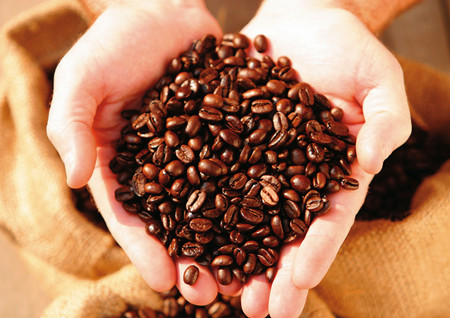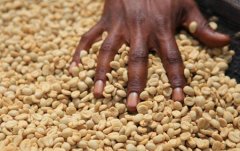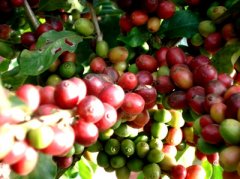Introduction of Guatemalan Fine Coffee introduction to Guatemalan Coffee producing areas
Guatemala is a well-known producer of high-quality Arabica coffee in Central America. The coffee from five volcanic producing areas and three non-volcanic producing areas is very unique and enjoys a high reputation in the international market.
Eduardo Ambrocio of Guatemala Coffee introduced Guatemala coffee to the audience at SCAA Houston in April 2010. 1. Acatenango Valley ®: The Acatenango Valley rises to 2000 meters (6500 feet) above sea level, is densely shaded and ecologically unique, and the nearby Fuego volcano erupts constantly, making its coarse, sandy soil rich in various minerals. Temperate sea breezes from the Pacific Ocean and seasonal climates allow this region's coffee to be sun-dried and processed by home-style traditional methods accumulated over the years.
AcatenangoValley ® cup profile: acidity, dry and wet aroma, pleasant, good body, clear and long finish.
Frag/Aroma Flavor Acidity Balance

Antigua Coffee Rich volcanic soil, low humidity, plenty of sunshine, and cool nights characterize the climate of Antigua coffee producing areas. The valley is surrounded by three volcanoes: Agua, Fuego and Acatenango. Tierra del Fuego is one of the three most active volcanoes in Guatemala, and its frequent eruptions bring ash that makes the soil of Antigua rich in minerals. Volcanic pumice in the soil maintains moisture and helps overcome Antigua's low rainfall. In addition, the region's dense shade protects coffee plants from occasional frosts.
Antigua Coffee ® cup profile is rich in moist aroma, well balanced, sweet and elegant in taste. 3. Traditional Atitlán ® is one of Guatemala's five largest volcanic coffee producing regions, and its soil is the richest in organic matter. 90% of the traditional Atitlan coffee is grown on the intensely fire-burning slopes of Lake Atitlan, where the daily breeze stirs the lake, an important factor affecting the microclimate of the region. This area has accumulated excellent planting and processing technology for a long time.
Traditional Atitlán ® cup profile: refreshing aroma, bright acidity, full body. 4. Rainforest Cobán ® Cobán is cloudy, rainy and cool all year round. The vast majority of rainforest Cobain coffee is grown in the region's distinctly undulating, foggy mountains, heavily influenced by limestone and clay from the Atlantic Basin. Cobain has two seasons: rainy and rainy.
Rainforest Cobán ® cup profile Distinct fresh fruit, balanced body, pleasant aroma. 5. Fraijanes Plateau ®: This area is volcanic soil, high altitude, abundant rainfall and variable humidity. Ash from Pacaya, Guatemala's most active volcano, provides important minerals for the region's soils. The dry season sunshine is abundant, although the morning fog, dew is big, but dissipates quickly. As a result, 100 per cent of the coffee in the region is sun processed.
Fraijans Plateau ® cup profile Bright, consistent acidity, full aroma, fine body. 6. Highland Huehue ®: Of the three non-volcanic coffee-producing regions in Guatemala, the Highland Huehue ® has the driest climate and the highest elevation. Dry hot winds from the Tehuantepec Plateau in Mexico protect coffee from frost and coffee can be grown to 2000 meters (6500 feet). Because of its remoteness, all coffee farmers have to process their own coffee, but fortunately there are so many streams in the area that small processing plants can be set up almost anywhere.
Highland Huehue ® cup profile: high acidity, pleasant, high body, with a wine finish. 7. New Oriente ®: Coffee in this region has been grown exclusively by small farmers since the 1950s, and today every farmer in the mountains is a coffee production unit. This region, once the most remote and poorest in Guatemala, is now showing signs of life. Rainy, cloudy, New Oriental ancient era is a volcanic area, soil volcanic metamorphic evolution, rich in minerals, nutrition balance, different from other volcanic coffee producing areas.
New Oriente ® cup profile: balanced taste, full-bodied, with chocolate flavor. 8. San Marco Volcanic San Marcos ®: San Marco has the hottest climate of Guatemala's eight coffee-producing regions, with rainfall of up to 200 inches (5, 000mm). The rainy season is earlier than in other areas, and coffee trees bloom earlier. As in other remote areas of Guatemala, volcanic San Marco coffee is grown and processed by small farmers. Due to frequent rains during the rainy season, most coffees are pre-dried in the sun and then dried in Guardiola dryers.
Volcanic San Marcos ® cup profile Aroma and taste with subtle floral notes, pronounced acidity and good body.
Important Notice :
前街咖啡 FrontStreet Coffee has moved to new addredd:
FrontStreet Coffee Address: 315,Donghua East Road,GuangZhou
Tel:020 38364473
- Prev

Costa Rican Tarazu Coffee production area introduces the roasting of Costa Rica San Roman Coffee processing Plant
Costa Rica Saint Roman processing Plant Royal Coffee Costa Rica San Ramon Royal Coffee country: Costa Rica Grade: SHB altitude: 1700m production area: Tara Pearl production area roasting degree: medium depth Baking treatment: washing treatment varieties: Kaddura, Kaduai processing Plant: Saint Roman processing Plant Flavor: berry, Caramel, Cream, Micro Flavor
- Next

The origin of Yunnan small grain coffee where does Yunnan small grain coffee come from? Yunnan small granule coffee
Small-grain coffee is suitable for growing in the mountains at an altitude of 800 to 1800 meters. If the altitude is too high, it will taste sour, and if it is too low, it will taste bitter. Small grains of coffee are mostly planted in dry and hot valleys at an altitude of 1100 meters above sea level, so they are moderately sour, rich and mellow. There is a unique environment suitable for the growth of small seed coffee in many areas of Yunnan, and the quality of small seed coffee is excellent. The planting area is mainly distributed in the
Related
- Does Rose Summer choose Blue, Green or Red? Detailed explanation of Rose Summer Coffee plots and Classification in Panamanian Jade Manor
- What is the difference between the origin, producing area, processing plant, cooperative and manor of coffee beans?
- How fine does the espresso powder fit? how to grind the espresso?
- Sca coffee roasting degree color card coffee roasting degree 8 roasting color values what do you mean?
- The practice of lattes: how to make lattes at home
- Introduction to Indonesian Fine Coffee beans-- Java Coffee producing area of Indonesian Arabica Coffee
- How much will the flavor of light and medium roasted rose summer be expressed? What baking level is rose summer suitable for?
- Introduction to the characteristics of washing, sun-drying or wet-planing coffee commonly used in Mantenin, Indonesia
- Price characteristics of Arabica Coffee Bean Starbucks introduction to Manning Coffee Bean Taste producing area Variety Manor
- What is the authentic Yega flavor? What are the flavor characteristics of the really excellent Yejasuffi coffee beans?

